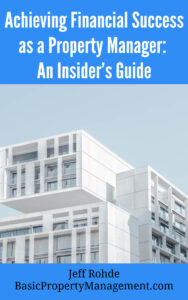Unlocking the door to your rental property, you step inside, looking around at the newly painted walls and professionally cleaned carpets. Every detail has been attended to, from the polished door handles to the gleaming kitchen countertops.
It’s ready, you think, for someone to call it home. But there’s a crucial step left to ensure this beautiful space doesn’t sit empty for long—creating an advertisement that captures the essence of your property and draws in the perfect tenants.
Unfortunately, this step is where many landlords inadvertently trip up, turning away potential interest with common yet avoidable mistakes. However, armed with insights on what not to do, you can craft an ad that not only stands out but gets your property off the market fast, ensuring your investment pays off sooner rather than later.
1. Neglecting Quality Photos
First impressions hold the power to either magnetize potential tenants or send them scrolling past. Quality images act as your property’s initial handshake with the world, generating leads and setting the tone for what viewers can expect.
To capture engaging photos that make your listing shine:
- Use natural light to your advantage: Schedule your photography sessions during the brightest part of the day. Open curtains and blinds to flood your space with natural light, creating inviting and vibrant images.
- Highlight unique features: Does your property have an elegant fireplace, a spacious balcony, or perhaps intricately designed ceilings? Make sure these unique selling points are prominently featured in your photos to stand out from the competition.
- Consider angles and composition: Experiment with different angles to find the most flattering views of each room. A slightly elevated angle can often make spaces appear larger and more inviting.
- Minimalism is key: Before snapping pictures, declutter the space. Remove personal items and excessive decorations. A minimalist approach can help potential tenants envision their own life and belongings in the property.
- Edit with a light hand: While some editing can enhance your photos, maintaining authenticity is crucial. Avoid over-saturating colors or excessively brightening images, as this can set unrealistic expectations.
2. Vague or Misleading Descriptions
Ensuring your descriptions are straightforward, honest, and detailed builds trust with potential renters and also filters out those for whom the property may not be a good fit, saving everyone time.
Location and Proximity
Highlighting the location of your rental property and its proximity to amenities like shops, schools, public transportation, and parks can greatly influence decision-making. Mentioning neighborhood vibes and any notable attractions nearby helps paint a vivid picture of life at your property.
Layout and Size
Provide a clear overview of the property’s layout, including the number of bedrooms and bathrooms, living spaces, and any outdoor areas. Square footage is crucial for giving potential tenants an idea of the size and space distribution, helping them to visualize their own belongings in the home.
Amenities and Features
Detailing the amenities and unique features of your property sets it apart from others. Whether it’s updated appliances, hardwood floors, a gym, pool access, or smart home technology, these details can be the deciding factor for someone choosing your property over another.
Upgrades and Renovations
If you’ve recently upgraded or renovated any part of the property, be sure to highlight this. New kitchen countertops, bathroom remodels, or even fresh paint jobs indicate to potential tenants that the property is well-maintained and cared for.
Lease Terms and Conditions
Be upfront about the lease terms, rent, security deposit, pet policies, and any other conditions. Clarity in these areas from the get-go can prevent misunderstandings and ensure that you’re attracting the right candidates who are comfortable with your terms.
3. Ignoring the Power of Social Media

Social media platforms offer a unique opportunity to extend the reach of your rental property advertisements far beyond traditional methods. With millions of users logging in daily, these networks can connect you with a vast audience of potential tenants who are actively seeking their next home.
- Create a dedicated page for your property: Establish a professional presence by setting up a page specifically for your rental property. This acts as a central hub where potential tenants can find detailed information, photos, and updates about the property.
- Leverage high-quality visual content: Make use of the visual nature of social media by sharing high-quality images and virtual tours of your property. Engaging visuals are more likely to be shared, increasing your advertisement’s visibility.
- Utilize paid advertising: Platforms like Facebook and Instagram offer targeted advertising options that allow you to reach specific demographics, such as people searching for housing within a certain area or age range.
- Engage with your audience: Don’t just post and forget. Actively engage with comments and messages to build relationships and trust with potential tenants. Prompt responses to inquiries can set a positive tone for future interactions.
- Share testimonials and success stories: If you have satisfied tenants, ask them to share their experiences. Testimonials can be powerful endorsements, adding a layer of trust and desirability to your listing.
- Post regularly: Keep your audience engaged by posting content regularly. Updates about the property, neighborhood highlights, and even tips for moving or decorating can keep potential tenants interested and remind them of your offering.
4. Setting Unrealistic Pricing
Setting a competitive and realistic price ensures your property is both appealing to potential renters and aligned with your financial goals while avoiding unintentional rent fixing. Achieving this balance requires understanding the local rental market and positioning your property wisely within it.
Analyze Local Market Trends
To set a competitive rental price, start by analyzing the local market trends. Look at the prices of similar properties in your area, considering factors like location, size, amenities, and condition. Websites that list properties for rent can provide a wealth of comparative data. This research gives you a baseline to understand what potential tenants might expect to pay for a property like yours.
Use Online Pricing Tools
Several online tools like Zillow and Rentometer can help landlords evaluate their property’s worth on the rental market.
These platforms often use algorithms to compare your property against similar listings in the same area, taking into account factors like square footage, number of bedrooms and bathrooms, and special features.
While these tools can provide a good starting point, it’s important to combine their insights with your own market research.
Consult with Real Estate Professionals
Real estate agents and property managers who are active in your area can offer valuable insights into creating a real estate pro forma and setting a competitive rental price. Their experience and knowledge of current market conditions can help you gauge how your property stacks up against the competition. Consulting with a professional may also uncover additional variables that affect pricing, such as seasonality or local economic shifts.
Consider Your Costs
While market rates will guide your pricing strategy, it’s also crucial to consider your own costs. Calculate your monthly expenses for the property, including mortgage payments, taxes, insurance, maintenance, and any utilities or services included in the rent. Setting a price that covers your costs while remaining attractive to tenants is key to your investment’s success.
Monitor and Adjust
The rental market is dynamic, and prices can fluctuate based on demand, season, and economic factors. After setting your initial price, monitor how your listing performs. If you’re not getting the interest you expected, be prepared to adjust your price. Conversely, if demand is high, you might have room to increase your rental rate.
5. Forgetting About the Tenant’s Perspective

By stepping into their shoes, you can tailor your advertisement to highlight aspects of your property that resonate most with your target audience. This empathy-driven approach not only makes your listing more attractive but also helps establish a connection with potential renters.
When tenants feel understood and see their desires reflected in your property’s presentation, they’re more likely to be drawn to it, fostering a positive initial impression that could make all the difference.
- Highlight convenience features: If your property is near public transportation, shopping centers, or has easy access to major highways, make sure these conveniences are front and center in your ad. Busy professionals and families will appreciate knowing how your property can make their daily routines smoother.
- Promote community and neighborhood: Beyond the property itself, potential tenants are looking for a community that fits their lifestyle. Mention nearby parks, cafes, schools, and other community amenities. If your neighborhood has a strong community spirit or unique local events, include these details to paint a picture of life beyond the four walls.
- Focus on safety and security: Safety is a top priority for many renters. Highlight any security features your property has, such as gated access, security cameras, or a neighborhood watch program. Knowing they can feel secure in their new home is a significant plus for many tenants.
- Showcase flexible spaces: With more people working from home than ever before, showcasing any flexible spaces that could serve as a home office or creative space can be very appealing. If your property offers an extra room, a quiet corner, or even a scenic view that would make for a serene workspace, be sure to promote it.
- Mention pet policies upfront: For pet owners, finding a rental that accommodates their furry friends is essential. If your property is pet-friendly, make this clear in your advertisement, and detail any specific policies or amenities for pets, such as a fenced yard or nearby dog parks.
Wondering if you’re charging enough rent? Here’s how to know for sure.
Make data-driven rental property decisions with real-time market insights from RentCast.io. Use code BIGDEAL for 20% off your subscription!

This is your chance to become a master of rental property management – Achieving Financial Success as a Property Manager: An Insider’s Guide has all the information and strategies you need to succeed.
Get yours now from your favorite bookseller and gain exclusive access to the tips, techniques, and strategies needed for success in the rental property business.
Don’t hesitate – grab it now:
- Amazon
- Books2Read for Apple, Barnes & Noble, Kobo, Scribed, and 8 more sellers with both eBook and paperback options available
- Payhip as a PDF
You can also:
- Visit our learning center
- Learn more about our consulting services
Content created by J. Scott Digital freelance copywriting services.



